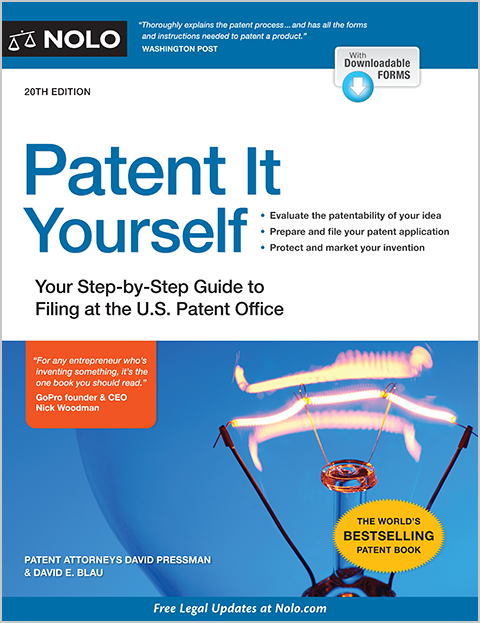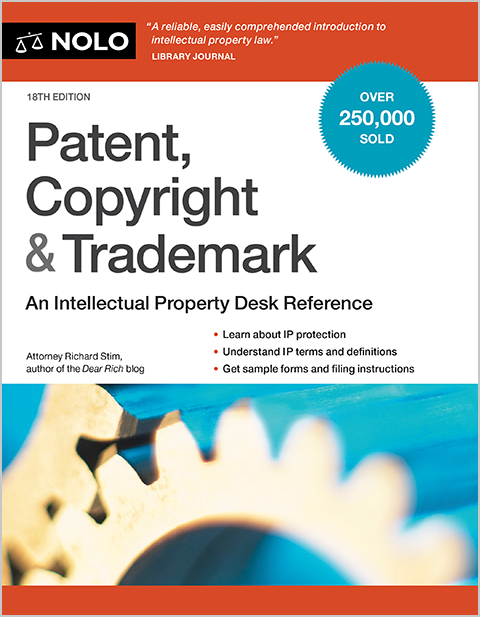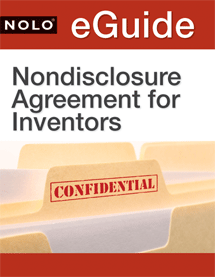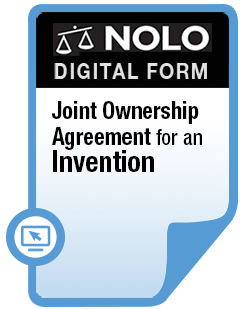Just Do It, as Nike would say. The what, how, when, and why of trademarking a slogan.
You're probably already familiar with the slogans "Eat fresh" for Subway and "You're in good hands" for Allstate. These iconic phrases-turned-slogans, along with many others, have been trademarked.
If there's a unique slogan that you've used or are thinking about using, you can trademark it. Here's what you need to know.
What Is a Trademarked Slogan?
Let's break down what a trademarked slogan is.
First, what's a trademark? A trademark is any word, phrase, design, or combination of these features that identifies the provider of goods or services. Trademarks distinguish your goods or services from the goods or services of someone else.
A trademark has two important parts:
- the word, phrase, or design being trademarked, and
- the goods or services that are associated with that trademark.
For example, both "McDonald's" and McDonald's golden arches are trademarks for restaurant services. When people see golden arches from the interstate, they expect to find a restaurant serving up Happy Meals.
Second, what is a slogan? A slogan is a phrase that is tied to a specific business, product, or service. The phrase "finger lickin' good" for KFC is a slogan and is used in the fast food restaurant's advertising.
Why Trademark a Slogan?
When you register your slogan with the USPTO, you gain access to a list of benefits. Here are six advantages of federal trademark registration.
1. You are the assumed rightful owner. You will have a legal presumption that you are the true owner of your trademark and have the right to use it. If you ever have to go to court to defend your trademark rights, you just have to present your registration certificate as proof of ownership. If you don't have a federally registered trademark, then you'll have to find another way to prove that you're the rightful owner of the trademark and that only you are allowed to use it.
2. You can use the federal registration symbol ® beside your slogan. You can use the symbol to show others that your slogan is registered. If someone uses your mark without your permission, they can't claim they didn't know you registered the mark because you put them "on notice" by using the registration symbol.
3. Your slogan will be included in the federal database. Your slogan will be listed in a federal database hosted by the USPTO that shows a list of all registered and applied-for trademarks. If someone tries to apply for your slogan or a slogan that is very similar to yours, the USPTO will probably refuse their application because it already has a record of your mark.
4. You can file a lawsuit in federal court. You can still file a lawsuit without registering your slogan with the USPTO. But you will be limited to state courts.
5. You can apply for trademark registration in other countries. You can use your U.S. application or registration to apply for protection in another country. You'll save some time registering your mark with foreign governments if you've already started or finished the registration process in the U.S.
6. You can record your trademark registration with U.S. Customs and Border Protection. This agency can help you prevent any goods from entering the U.S. that violate your trademark rights. For instance, if you've registered the slogan "Born to Bun" for hair clips, then U.S. Customs can stop a company selling hair ties under the slogan "Born to Buns" from shipping their hair ties to the U.S.
How to Trademark a Slogan?
So maybe you have a slogan that you've already started using with your business. The good news is you already have what's known as a common law trademark. You can enjoy some of the general protections that the courts have given unregistered trademarks. But these protections are limited.
When you hear someone say they have "trademarked" their business name or slogan, they usually mean they have registered their trademark with the United States Patent and Trademark Office (USPTO).
The USPTO is a federal agency that grants trademarks on a national level. When you register a trademark with the USPTO, your trademark rights extend across all 50 states. Without this federal registration, you only have a few basic protections that are limited to the geographic area where you use your mark.
For example, if you use the slogan "a shine and a smile" for your car washing business and you have only two locations in western Massachusetts, then your slogan trademark will only be recognized in western Massachusetts. But if you register your slogan with the USPTO, then your trademark will be recognized and protected in every state regardless of your car wash's location.
To officially register your trademark, you'll need to file an application with the USPTO for trademark registration. You can file online and the USPTO will keep you up to date on your application's progress.
For the application, you'll need to know:
- your slogan
- the goods or services you want to apply for under your slogan
- when you started using your slogan
- the contact information for the owner of the slogan, and
- a way to pay the filing fee.
Look over the application before you file and do a little research beforehand so you know what to expect.
When Can You Trademark a Slogan?
You can register a slogan at any time after you've started using it. But you can also begin the application process before you've started using your slogan. If you have a real, good faith (or "bona fide") intention to use the slogan, you can apply for registration now and finish the registration process once you've started using the slogan.
"In Commerce"
To register your slogan, you must first use it "in commerce." What "in commerce" means depends on whether you're selling goods or services.
For goods, the slogan must appear on the goods themselves, on packaging for the goods, or on a point-of-sale display. The goods must also currently be sold or transported.
For services, the slogan must appear in the sale, advertising, or completion of the services. The services must actually be performed.
(15 U.S.C. §1127 (2022).)
Federal Commerce
If you want to register your slogan with the USPTO, you have to use it in a type of commerce that's controlled (or "regulated") by the federal government. That means that you need to sell or transport your goods or provide your services either between:
- two or more states ("interstate")
- the United States and a territory of the United States—for example, between Florida and Puerto Rico, or
- the United States and a foreign country—for instance, between California and China.
(15 U.S.C. §1127 (2022).)
When Can't a Slogan Be Trademarked?
You might not be able to trademark a slogan for various reasons. The problem might be with the registrability of the slogan itself or it might be that another slogan takes priority.
Slogan Doesn't Function as a Trademark
A trademark's purpose is to let buyers know who the provider of the goods or services is. When someone looks at your slogan, they have to immediately think of your company. If they don't, the USPTO will see the slogan as "decorative" or "ornamental."
For example, assume you sell stationery and one of your items is a journal that has the phrase "Know Thyself" printed in big letters on the front cover. That phrase doesn't function as a trademark in this context because of its placement. Buyers are accustomed to seeing different random phrases on the fronts of journals just like they're used to seeing drawings of dolphins or flowers. Because the common purpose for a journal's front cover is to display a design, a buyer looking at a phrase on the front cover won't know if the phrase is actually a slogan or just a fun phrase to give the journal personality.
Slogan Is Informational or Too Common
You usually can't register a slogan that simply delivers information or consists of a very common phrase. The theory is that the public probably won't consider a common or informational phrase as identifying a brand or provider.
A slogan is informational and not registrable if it falls into one of these three categories:
- The slogan provides general information about the goods or services it's associated with—for example, "The best beer in America" for beer simply describes the quality of the goods.
- The slogan is commonly used in advertising for that industry—for instance, "Drive Safely" for cars is widely used by various companies and is a part of everyday speech.
- The slogan is a direct quotation, passage, or citation from a religious text.
Slogan Is Too Similar to Another Slogan
You can't have a slogan that's the same as or too similar to a slogan that already exists unless yours is in a completely different industry. If a buyer would confuse your slogan with another, then you'll likely not be allowed to register yours. The USPTO calls consumer confusion from two similar marks a "likelihood of confusion."
The USPTO weighs several factors when deciding whether two marks are too similar. But the two most important factors the USPTO considers are:
- how similar the slogans are to each other, and
- how related the goods or services are to each other.
If two slogans are the same but are connected to completely different goods, then both slogans can be registrable.
For example, an airline and a birdwatching store could both use the slogan "Soaring Above the Atmosphere." Because the companies' services are so different from each other, buyers wouldn't think the two companies are related. Instead, buyers would believe the shared slogan is a coincidence.
How Much Does It Cost to Trademark a Slogan?
You'll need to invest at least some money in registering a trademark. There are two general kinds of costs to consider: filing fees and attorneys' fees.
Filing Fees
The USPTO charges certain filing fees for your trademark application, and a full list of fees can be found on the USPTO website. The filing fees range and depend on how many categories of goods and services you plan on registering your slogan with.
If you've already started using your slogan, then you'll likely only need to pay one filing fee upfront. But if you file an application for a slogan that you haven't started using yet, then you'll have to pay multiple sets of filing fees at different stages of the application process. As of 2023, the filing fees start at $250.
Attorneys' Fees
You can certainly prepare and file a trademark application on your own. If you do so, you'll only need to worry about the filing fees. But trademark applications can be confusing, and asking an attorney for help might end up saving you time and money down the line.
Attorney's fees typically range from a few hundred to a few thousand dollars depending on how involved the attorney is with your application.
There are other, online services that prepare and file a trademark application for you. These services can be as inexpensive as $49 and generally aren't more than a few hundred dollars. Do your research when considering these services, and make sure you know what they do and don't include.
Can You Copyright Your Slogan?
When a slogan is used to identify the source or provider of certain goods or services, then the slogan is a trademark.
A slogan can never be copyrighted. A copyright legally protects creative works. Because a slogan is short and usually not very original, it wouldn't meet the requirements of copyright protection.
Example of Trademarking a Slogan
Let's say you want to trademark a slogan for a t-shirt. You'll want to start by making sure that your slogan can be registered in the first place.
First, your slogan needs to function like a trademark. Similar to the earlier journal example, a phrase written across the front of a t-shirt doesn't function as a trademark. Buyers are used to seeing designs across the front center of a shirt, so any phrase they see there will be viewed as a design and not as a slogan. The slogan will need to either appear on the upper breast of the t-shirt, on the tag in the back of the shirt, on a tag attached to the shirt (for instance, above the size of the shirt) or on the packaging for the shirt. These are all locations where buyers would expect to see a trademark.
Second, you'll need to make sure that your slogan isn't informational and doesn't consist of a common phrase.
Third, you should check to make sure that there are no other slogans out there already that are the same or too similar to yours. You can perform a trademark search yourself, use a trademark search service, or have an attorney look into it for you.
Fourth, make sure you are using your slogan in federal commerce. If you're selling goods, then you'll need to sell or transport your goods to another state or U.S. territory. If you're providing services, you'll need to perform those services in more than one state or U.S. territory. If you're outside the U.S., then your goods should be sold or transported or your services performed in the U.S. and in a foreign country.
If you've determined that you can register your slogan, then you'll need to apply to register it with the USPTO. The USPTO has several requirements in the application process. Importantly, before your mark registers, you'll need to prove that you're using the slogan to sell your t-shirts.
If your mark registers, then you've done it. But don't forget that you'll need to renew your registration every so often. If you're still using your slogan with your t-shirts 25 years from now and you've filed for all your renewals, then you'll still have your trademark.
Speaking With a Trademark Attorney
If you have experience performing trademark searches and registering trademarks, you can likely trademark your slogan yourself. But if you're unsure about the trademark risks associated with your registering your slogan or have legal questions about the application process, you should talk to a trademark lawyer. They can file advise you on your trademark rights and apply for trademark registration for you.
Talk to a Lawyer
Need a lawyer? Start here.
How it Works
- Briefly tell us about your case
- Provide your contact information
- Choose attorneys to contact you
- Briefly tell us about your case
- Provide your contact information
- Choose attorneys to contact you



